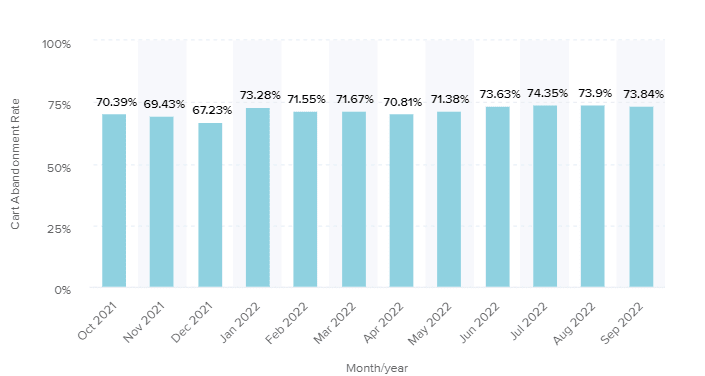To find the perfect formula for a digital marketing campaign, you have to analyze the campaign regularly to see what works and what doesn’t. But what are the KPIs (key performance indicators)? What can show whether you’re hitting your goals?
Wise tracking and data usage can turn any regular campaign into a gold-digging machine. You have to find the points of influence on your audience and give them what they need. This will result in greater engagement and more purchases from your business.
We got you covered! In this piece, we’ll recall what digital marketing metrics are, why they are important, and which ones you should continuously monitor.
What Are Digital Marketing Metrics?
Digital metrics are values marketers use to track and assess the performance of their campaigns. There are a lot of metrics, as well as digital tools, that can gather and analyze data for you. They allow for quick and easy monitoring of your pages’ traffic, engagement, conversion, ROI (return on investment), and more.
Monitoring these metrics manually is very difficult, and there’s no guarantee you’ll get 100% accurate information. That’s why choosing several tools that will encompass all the KPIs you need is much more effective.
Benefits of Tracking and Monitoring Metrics of Digital Marketing
You can track anything these days, making it fairly easy to see which marketing channels work and which ones should be avoided. It’s always best to relocate funds to the most effective approaches, magnifying your results. Hiring a trusted digital marketing agency to do a digital analytics audit, or to manage your campaigns, is a good option that can save you a lot of time and energy. While it may cost more upfront, it’s worth the investment if you want to maximize your ROI.
So, the benefits of analyzing your key metrics for digital marketing are:
- You get a clear picture of your marketing strategy and how it works (or doesn’t).
- You’re one of the first to know the trends of your niche and hop on them to gain more traffic.
- You help improve employee performance by arming your marketing team with digital tools for proper analysis.
Speaking of tools, there are plenty of them to help you with the analysis of your conversion rates, website traffic, audience engagement, revenue, and other vital metrics. The solutions include:
- Google Analytics – see your website statistics, conversion monitoring, goal-setting, etc. You get real-time data and can analyze how well people interact with your site. The GA4, which is the newest update, gathers data from your site and app to get insight into the customer journey.
- Google Tag Manager – adding, deleting, and updating your tags (pieces of code you can use on your website to integrate marketing, analytics, and support solutions). The tool allows you to track conversion and website analytics by tracking activity or “events” on your website and application, and you can utilize the data for remarketing whenever needed.
- Google Data Studio – another Google tool that can turn your data into customizable dashboards for teams and customers.
- Google Search Console – an essentially free service by Google that helps you monitor and improve your website’s performance in search. The tool allows you to make sure the search engine crawls your pages, views traffic data, addresses indexing problems, and more.
- SE Ranking SEO Report Generator – a more encompassing tool that helps you visualize data from different sources simultaneously and make data-driven decisions and effectively communicate the information to the team and clients. The tool helps you see what works and what doesn’t in your strategy, get insight into what competitors are doing and how you can do it better, identify trends and use them on time, and improve employee performance.
The metrics you track depend on your marketers’ choice, but we have 9 options that are universal for all businesses.
9 Digital Metrics Worth Tracking in Your Marketing Campaigns
Here is the list of metrics of digital marketing campaigns that are always worth looking into.
1. Web Traffic by Sources
The number of leads and customers you acquire depends, above all, on the volume of traffic your website gets. You should monitor and track all sources of traffic:
- Organic – free traffic that accesses your website through unpaid sources, e.g., organic search results.
- Direct – visitors landing on your website directly, without being referred from elsewhere.
- Referral – people accessing your site by clicking links on other sites instead of finding you on Google or another search engine.
- Social media – those visiting your site from social media links.
This shows you which channels get the most attention and are worth dropping. To drive more traffic, you can improve and diversify your content, optimize or re-optimize it, showcase your products, and utilize paid ads and social media marketing (depending on the channel you want to focus on).
2. Number of New vs. Returning Visitors
One of the most critical metrics of digital marketing is new and returning visitors. While bringing new people to your website, products, and services is important, you should also focus on getting the existing ones back.
Think about it like retaining a customer. It’s much cheaper than acquiring a new one and often more valuable as a returning buyer may become an advocate for your brand.
A user coming to your website often, especially from search results, has a higher chance of eventually buying from you. Remember that when analyzing your campaign.
3. Interactions per Visit
Interactions per visit is a metric showing every action users take on your site. It includes button clicks, form completion, purchases, etc. By analyzing what users do on your pages, you can understand their customer journeys better. This allows you to properly place content, media, CTAs, best sellers, etc.
This KPI is especially significant if you want to increase your conversion rate. If people don’t convert during their first visit, then what are they doing? Where can you place CTAs to encourage them to take the focus action?
Interactions per visit will help you figure it out.
4. Pageviews
The pageviews metric shows you how many times a page was loaded. It doesn’t refer to unique individuals accessing the page; it means all loadings, including organic and paid.
While you can filter the new and returning visitors, the metric is still pretty broad, aimed at giving you a quick understanding of how your pages are doing.
5. Cost per Lead
CPL shows you how much you pay for each lead on board. Regarding the marketing campaign, this is the amount of money you spend on it divided by the number of leads you’ve generated.
By using attribution modeling, you can find out exactly what marketing channel is responsible for the most leads. You can then relocate your funds and efforts there for the next campaign and/or get insight into the effectiveness of your techniques, optimizing them later.
Cost per lead can briefly show you what’s up with your ROI, although there’s another metric for getting the big picture on your marketing financial successes or failures.
6. Customer Acquisition Cost
Another example of digital marketing key metrics is customer acquisition cost. It’s similar to CPL but focuses on generating customers, i.e., actual sales. This KPI looks deeper into your sales funnel, as many leads may be stuck before making a purchase.
People go as far as adding products into carts and then abandoning them. The rate for this is 73.84% as of September 2022.
So, almost ¾ of your leads aren’t converting into sales. That’s why tracking CPA (cost per acquisition) and understanding how well your sales funnel is built is important. It will also show you what marketing channels work best for customer acquisition.
7. Conversion Rate
This is one of the key metrics for digital marketing, especially if you’re analyzing your landing pages. It shows the ratio of people who took the focus action to overall page visitors. You will see how many people become leads by tracking the conversion rate. You can find out where those pages need improvement in combination with other KPIs from your analysis.
The smallest things, like CTA placement and style, as well as the quality of your copy, can influence the dynamic.
8. Click-Through Rate
You can use CTR to see how well your keywords, ads, and offers perform. It shows the ratio of people who clicked on the link with your asset to the total number of impressions.
Click-through rate depends on many factors, including what you’re promoting, your industry, etc. A high rate means your offer is relevant and valuable to your target audience.
To achieve a decent CTR, you should be really careful when choosing focus keywords for your ads. Consider working on them, try a different type of content on the pages you advertise, work on the power of your offers, write better CTAs, etc.
9. Return on Investment
This metric is one of the most important as it assesses all of your marketing efforts. Return on investment is the KPI showing whether your campaigns are worth it.
To calculate it, you need to subtract the money you’ve spent on the campaign from the amount you’ve gained, then divide the number by the sum you’ve spent. Then multiply the number by 100 to get the percentage.
The metric is very general, so to find out the details of your return on investment, always look into CPL, CPA, and conversion rate.
Summary
Tracking digital marketing key metrics can help you stay updated on the latest niche trends, spy on your competitors to ensure you remain on top, and adjust your marketing strategy whenever needed.
There are dozens of metrics, but your KPIs depend on your business marketing goals. The tool pool is also vast, and your choice depends on what you need to track. A decent report builder is also essential since you or your marketers must share the data with the team and/or customers.
While the final metric list depends on your goals, there are nine universal metrics that are always relevant. The metrics include website traffic and its sources, customer acquisition cost, click-through rate, ROI, conversion rate, and others.
Include these KPIs in your next report to see the big picture of your marketing campaign.









0 Comments